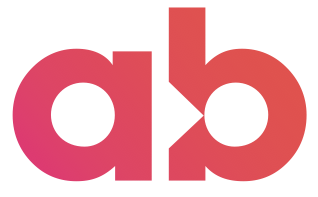Driving Innovation in Pharma
Leadership Blog

Written by Achieve Breakthrough

Driving Innovation in Pharma by Mile Straw
The pressure that the pharma industry is under is clear to see. We need only look at the amount of actual or attempted deals activity to see that market players – even the largest – are desperate to find ways to build value and profitability.
 Last year, we saw a host of deals announced or rumoured in just one week. Pfizer attempted to acquire AstraZeneca for somewhere in the region of £69 bn; AbbVie abandoned a £32bn takeover of Shire; Actavis emerged as the successful buyer, ahead of Valeant and hedge fund billionaire William Ackman, of Botox maker Allergen in a $66bn deal; while Reckitt Benckiser announced its intention to spin off its pharmaceutical division at the end of the year.
Last year, we saw a host of deals announced or rumoured in just one week. Pfizer attempted to acquire AstraZeneca for somewhere in the region of £69 bn; AbbVie abandoned a £32bn takeover of Shire; Actavis emerged as the successful buyer, ahead of Valeant and hedge fund billionaire William Ackman, of Botox maker Allergen in a $66bn deal; while Reckitt Benckiser announced its intention to spin off its pharmaceutical division at the end of the year.
New breakthrough drugs are few and far between, while an influx of generics has hit the market. Meanwhile, health services around the world are having to work to tighter budgets and are not prepared to pay the kind of premiums for new products that they did in the past.
The net effect is that the pharma industry is having to reduce fixed costs as never before. It needs to get more for less. And one of the biggest areas that this applies to is – its own people. It desperately needs to create a more innovative, creative and free-flowing culture where people feel empowered to work to their full potential.
However, in a new cost-cutting environment where ROI is everything, its people are having to get used to a very different climate from years gone by.
Middle managers are reluctant to take risks as they are constantly adapting to change rather than driving it and capitalising on it. Recently, it was reported that a lack of risk appetite is undermining European life sciences. This at a time when they most need to successfully take risks.
In addition, pharmaceuticals are finding it hard to attract the new talent needed. A recent study found that pharma topped a ‘talent challenge poll’ with 51% of respondents reporting it was becoming more difficult to attract and hire the right people.
I believe that boards and senior management within pharma companies are missing a trick. The talent they need is there all around them – but they need to unlock it from what I call the ‘frozen’ middle. The task for senior leadership is to find ways to enable the layers of their middle management to work to its full potential – and indeed, to reach new heights of productivity.
How can they do this? In my experience, there are four key steps:
- Retrain the senior leadership and middle management on what they believe it is possible to accomplish. By raising aspirations and inspiring them to be bolder, a new mind-set can start to be born
- Help them blow up conventional wisdom and assumptions. By encouraging open discussion, in which anything can be challenged, the middle layers can start to look with fresh eyes at new ways of working
- Help them see that they can be accountable for delivering on things that are missing and essential. By giving them a sense of empowerment to change things, they will feel a new level of engagement and commitment to the business
- Open conversations about the future they want to build. Encourage discussion of the place everyone wants to get to and help to create the future they want
This is not something that can happen overnight and it is not straightforward. It takes genuine commitment and an investment of time and energy. It requires much of senior leadership. They must be as committed to the process as anyone, and it requires them to believe that what they are really there for is to unblock potential and creativity - rather than simply to control and manage.
If senior leadership can create the right environment, it could be genuinely astonished at the results it can achieve by unlocking the potential of its mighty middle. It can create an environment characterised by genuine innovation, the constant and productive challenging of the status quo, and collaborations across all the different elements of the pharma pathway.
We have seen employee engagement shift from 60% to 85% at one global pharmaceutical company we worked with, with absolute savings of $95 million. At another, there was tangible ROI of 60:1 with an 80% over-achievement of target improvements.
In a corporate world that is more unpredictable than ever, the pharma companies that are agile and super-responsive, powered by an inspired middle management layer, will be the successful organisations of the future.
Read more about are Senior Leader Development Programmes
View the full article in EPMmagazine.com
Connect with Mike Straw on LinkedIn: uk.linkedin.com/in/mikestraw/en
Published 01/08/2017
Subscribe by Email
Achieve more breakthroughs. Get expert leadership ideas, insights and advice straight to your inbox every Saturday, as well as the occasional bit of news on us, such as offers and invitations to participate in things like events, webinars and surveys. Read. Lead. Breakthrough.
